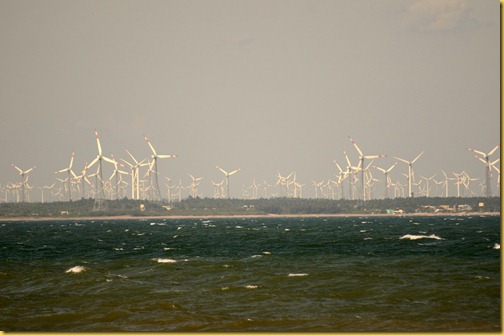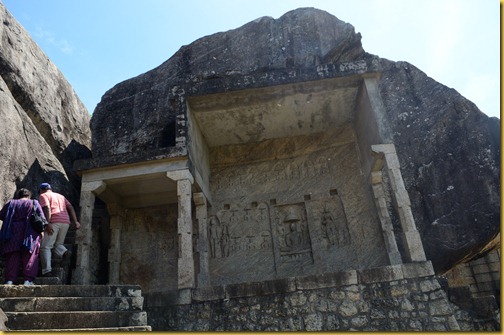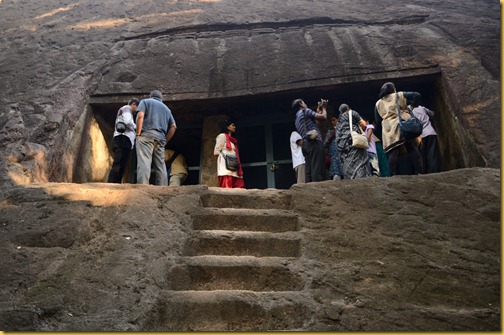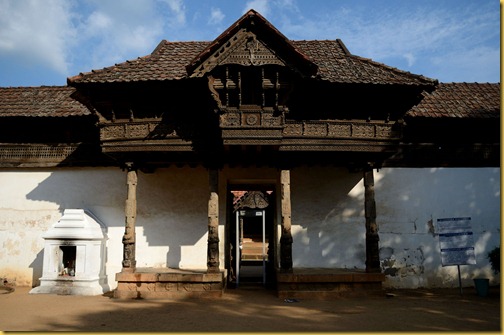Five places to visit in Naanjil Naadu
Ringed in by oceans and mountains , my journey took me to the erstwhile land called Naanjil Naadu that has been sung about from the days of Sangam era. Today, the region is identified as a part of Kanyakumari and Nagercoil districts, where God’s own country, Kerala first had its origins. Scattered with temples, forts, rock cut caves, palaces with paintings, inscriptions and carvings – there are monuments left behind by these rulers as souvenirs of their reign.
The INTACH tour organised by Tamil Nadu chapter took us to towns and villages, to deserted lakes and forts, to the banks of small rivulets, up a hillock, into dense forests to look for the remnants of the many dynasties that ruled Naanjil Naadu .The Ay rulers from Sangam era reigned here till the 9th century . Early Pandyas had built monuments that led us towards Tirunelveli. The Cholas had left their stamp here ,and the Venad rulers who were the founders of modern day Travancore state ruled from Padmanabhapuram palace here. However everything is not just about heritage. Steeped in cults, we learnt about both facts and folklore, while I got lost in the landscape painted in front of me – natural, social, political, historical, spiritual. While we visited several obscure and nondescript towns and deciphered several inscriptions with the help of our expert guide, Dr V Vedachalam, retired senior epigraphist from Tamil Nadu State Archaeology Department, these are the five places in Naanjil Naadu that I would like to visit again.

1. Chithraal
Angels and celestial beings apparently hovered around this hillock and hence it is referred to as Thirucharanattumalai . I would believe this as this is one of the most beautiful places I have ever seen. The scene is virtually breathtaking. The sky is clear, the floating clouds touch the distant peaks of mountains, the greenery is refreshing and the breeze comes calling. An abode of Jaina monks, Dr Vedachalam explains to us that “charanathar “according to Jainism refers to those celestial beings who fly in the skies and are seen in places of worship or living spaces which could be mounds or mountains too.
The rocks are carved with bass relief sculptures depicting Thirthankaras and yakshis that date to the 9th-10th centuries. There is the serene Mahaveera, the snake hooded Parshvanatha along with Neminatha, the yakshis – Padmavathy and Ambika, also known as Dharmadevi looking out into the open. Right atop the cave is a small structural temple dedicated to Bhagavathy deity. Sitting beside the rock, I look out for angels as hillocks surround us in the distant horizon with pools of water reflecting the colours of nature.
2.Thirunandikarai
Deep inside a dense rubber plantation, a stream flows besides an ancient Shiva temple . There is not a soul in sight. If you squint through the woods, a path takes you down to a rock cut cave temple with empty cells. The temples are located in Thirunandikarai, which gets its name from the stream, erstwhile a river called Nandiaaru.

While the Shiva temple built in the 10th century resembled the architecture style of Kerala monuments, the rock cut cave temple was probably built around the 7th century was probably a Jaina monument. As the birds sing to the dawn, we walk up to the cave temple and see traces of early paintings on the walls. Inscriptions here refer to Vikramaditya Varaguna of the Ay dynasty and even to Raja Raja Chola, who had celebrated his birthday here. The lush greenery, the birds, the sun streaming through the woods, the silence – Thirunandikarai takes you to a different world, one of peace and beauty.
3.Padmanabhapuram palace
The origins of the present day Kerala begins here as this was where the Travancore state was born. Built in the 1600 by the ruler, Iravi Varma, the palace is located inside a fortress with the backdrop of the Western Ghats around it. The moment you step inside the palace, you enter a world as old as 400 years old. Even the 300 year old clock tower shows you the time. Made of jackfruit wood and a combination of granite, coconut shells, egg white , the palace takes you into the King’s Council Chambers, the Mother’s Palace, the Performance Hall among several other chambers. Pillars made of jackfruit wood, galleries of paintings, brass lamps and wooden sculptures, a wooden cot with more than 60 pieces of tree trunks all give it an unique Kerala stamp. It is believed that the ruler Marthanda Varma dedicated his kingdom to his family deity Padmanabha and Padmanabhapuram lost its significance when the capital was eventually shifted from here to Trivandrum in the 18th century .
This is my all time favourite . I am standing at Vattakottai, a circular sea port and am encircled by the sea with the mountains at the backdrop. Built in the 18th century by the Travancore kings, the fort was apparently constructed by a Dutch Naval officer De Lannoy who was initially with the Dutch East India Company but eventually became the commander of the Travancore army. The symbols of two elephants and a conch shell stand silently in this picturesque fort which hardly looks like imposing. And as many fort lores say, a tunnel was apparently built here too, but it is now closed. But as you gaze at the blue waters with the low hanging clouds and the waves retreating from the shores, one cannot imagine this was once a battlefield.

5.Parthivapuram
An idyllic little village with an idyllic little temple, Parthivapuram or Parthivasekarapuram seems like just another Indian hamlet, but for the fact that it goes back to the 9th century . One of the oldest places we visited, the Vishnu temple in Parthivapuram was built by one of the oldest dynasties who have ruled right from the Sangam era – the Ay Dynasty . King Karunandadakkan . Dr Vedachalam gives us a very interesting insight into this village. A copper plate found here informed us that there was once a vedic school here in the 9th century. The Ay rulers had clearly mentioned details regarding the education system, the basis of selection, discipline related issues and even a code of conduct for the students. As we sit in the portals of the temple, listening to stories, we are literally transported to a different era.
This was published in Yahoo recently . You can read more stories on Naanjil Naadu here. A story on Thirunandikarai was published in my column, Inside Story in The Hindu Metro Plus



Interesting facts on history! Among these I have visited Vattakottai and Pandmanabhapuram palace.
Wonderfully informative, I was not aware of the first two sites before.
Lovely post. Would love to visit Vattakottai beach.
http://rajniranjandas.blogspot.in